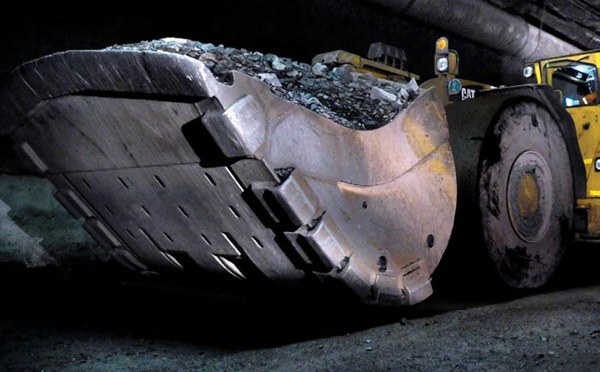Booyco Electronics CEO Anton Lourens shares insights on the company’s journey, the current state of Proximity Detection Systems (PDS) and the technologies shaping its future.
Click to download and read pdf

Booyco Electronics’ Proximity Detection Systems (PDS) are now a common feature in South African mines.
Proximity Detection (PDS) has seen a remarkable evolution in South Africa’s mining industry over the past two decades. Once simple warning tools, today’s systems are highly advanced technologies integrating GPS, RFID and other technologies that now play a central role in improving safety, preventing fatalities and driving operational efficiency.
At the forefront of this transformation is Booyco Electronics, a South African innovator committed to developing PDS solutions tailored to the diverse and often demanding conditions found in both underground and surface mining.
Booyco Electronics’ origins and evolution
Booyco Electronics was founded in 2006 in direct response to calls from the coal mining sector for a system to help reduce mining machine injuries and fatalities. The company’s first innovation was the Booyco CWS 500, a collision warning system designed to detect personnel near trackless mobile machines (TMMs) in underground environments.
“This was followed by adding vehicle-to-vehicle solutions and in a natural progression, we expanded into PDS solutions for surface applications,” says Lourens. “Today, we offer a full suite of PDS technology solutions that cover both underground and open-cast mining operations.”
Booyco Electronics’ expertise extends beyond mining, too. Among its specialised solutions is a PDS designed for use in refineries and smelters, reflecting the company’s ability to customise systems to different high-risk industrial environments. The company’s products are also used in industries such as forestry.
Underground vs surface PDS
The underlying technology differs significantly between underground and surface deployments. In underground settings, very low frequency (VLF) radio waves – typically under 125 kHz – are used to penetrate rock and ‘see’ around corners, typically over distances of up to 20 m. Personnel wear RFID tags, often built into their cap lamps, which detect sensors mounted on mobile equipment. When a person enters a predefined danger zone, the system sends visual and/or audible warnings to both the operator and the worker. Some solutions also integrate with automatic braking systems to prevent collisions.
“In surface mining, we can rely on GPS to track the location of vehicles,” explains Lourens. “This enables potential real-time tracking and, with RFID, allows vehicles to communicate with one another and with control systems.
One of Booyco Electronics’ unusual installations is at a coal terminal where its configurable systems are adapted to the specific operational requirements of the site. “While hardware may be standardised, software customisation is key due to varying operators’ codes of practice (COPs),” Lourens notes.
Challenges and trends
Deploying PDS comes with its challenges, particularly in terms of infrastructure, connectivity and varying environmental conditions. A growing trend is the adoption of sensor fusion, integrating multiple sensing technologies into a single coherent platform. The goal is seamless interoperability and improved efficiency across technologies and machines.
International standards, such as ISO/TS 21815-2, are helping to address these challenges by guiding how PDS interfaces with different vehicle systems, ensuring broader compatibility and system integration.
Since 2022, South African mines are required by law to implement PDS systems. “The implementation has increased the focus on training, change management and user buy-in,” says Lourens. “Our service offering now includes not just system supply and maintenance but also helping mine personnel adapt to and adopt the technology.”
The operational value
While improving safety remains the primary goal, PDS also delivers measurable operational value. “These systems generate data that can help operators identify bottlenecks, track vehicle or personnel movement outside designated zones and detect traffic congestion in real time,” Lourens explains.
This data can be used to enhance mine planning, resource allocation and workflow efficiency – benefits that support both productivity and regulatory compliance.
Nearly 20 years after Booyco Electronics’ first system went live, the pace of PDS innovation continues to accelerate. “The functionality of these systems has advanced rapidly, and we continue to evolve them to stay aligned with technological advances and the industry’s changing needs,” says Lourens.
What hasn’t changed is Booyco Electronics’ core purpose: “Our mission has always been – and continues to be – to keep people safe in high-risk environments,” he concludes.
As mining embraces digital transformation, PDS technology has firmly established itself as a critical enabler of safer, smarter operations.